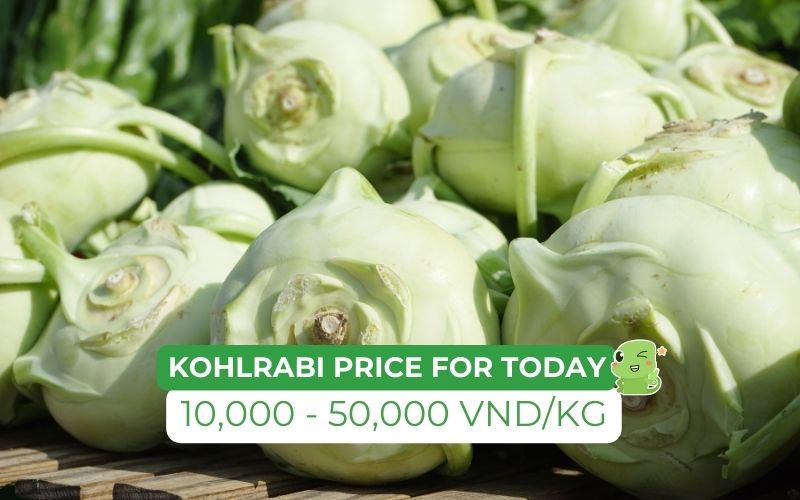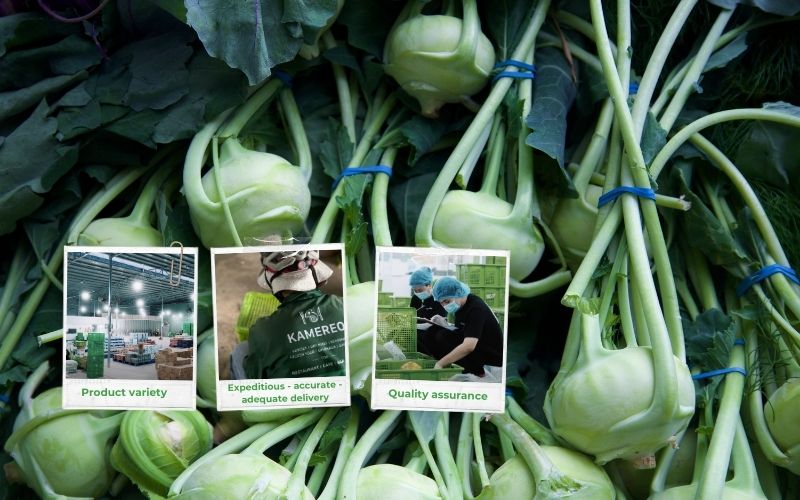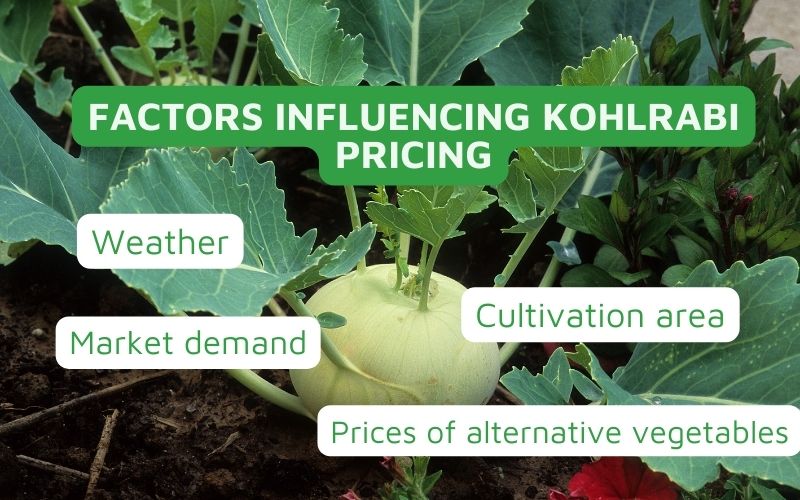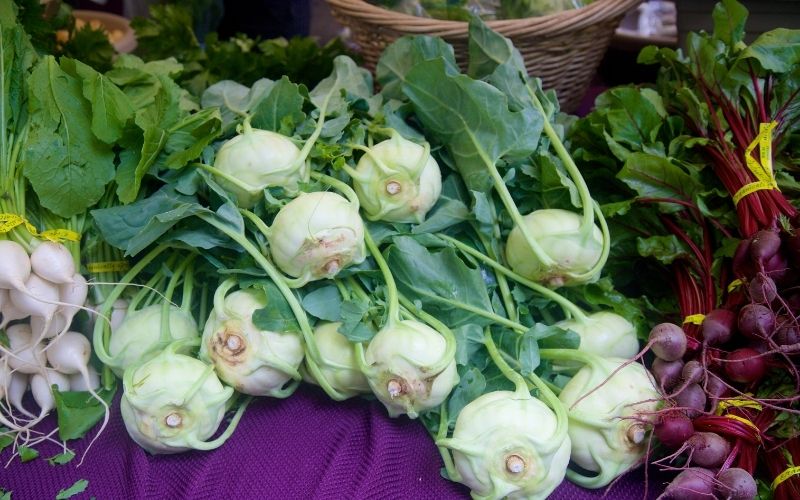Kohlrabi is a familiar vegetable in many Vietnamese families, with a distinctive spherical shape, green or white skin, and a crisp, sweet, nutritious flesh. So, how much is today’s kohlrabi price per kg? How does the latest kohlrabi price fluctuate at markets and supermarkets? Let’s update the detailed information on kohlrabi prices over the past 24 hours Friday, July 4, 2025 and the factors affecting the price of this vegetable.
📖 This article belongs to the TODAY’S MARKET PRICE NEWSLETTER series
This is a series of articles providing detailed and updated information on the prices of goods on the market.
Today’s Kohlrabi Price
Kohlrabi prices on the market fluctuate significantly, from 10,000 – 50,000 VND/kg, depending on the selling location and type of kohlrabi. In particular, kohlrabi prices at wholesale markets and gardens are often cheaper than retail prices on the market.
Refer to the detailed kohlrabi price table below for easy consideration and selection of products at a reasonable cost:
| Type | Price | Unit |
|---|---|---|
| White Kohlrabi | ||
| At the garden | 15.000 - 20.000 | VND/kg |
| At wholesale market | 10.000 - 15.000 | VND/kg |
| On the market | 45.000 - 50.000 | VND/kg |
| Green Kohlrabi | ||
| At the garden | 15.000 - 20.000 | VND/kg |
| At wholesale market | 10.000 - 15.000 | VND/kg |
| On the market | 45.000 - 50.000 | VND/kg |
(Updated: February 2025)

Note: The current selling price of kohlrabi on the market may vary depending on the category, supply location, supply and demand situation, weather, and season.

Kohlrabi Da Lat
27,300đ/KILOGRAM
Kamereo – Supplier of fresh, wholesale-priced kohlrabi for F&B businesses
Kamereo is a wholesale food supply platform, specializing in providing kohlrabi and fresh vegetables and fruits for F&B businesses. Kamereo’s highlight lies in its commitment to product quality by establishing close partnerships with reputable gardeners and VietGAP-standard farms. This careful selection ensures that every kohlrabi reaching customers is clean and fresh.
In addition to quality supply, Kamereo also has a modern warehouse system and a strict food inspection process. This ensures that the product quality is always maintained at an optimal level, meeting all strict requirements from customers.
Kamereo is also known as an “all-in-one” food supplier, bringing maximum convenience to restaurants and eateries. With a diverse product catalog of more than 3000 types, Kamereo helps customers save time and effort in finding sources and working with food supply partners.

In particular, Kamereo scores points for providing fast and flexible delivery services, supporting orders until 12:00 midnight and delivering quickly the next morning. Furthermore, Kamereo also applies a co-inspection policy upon receipt, allowing customers to check the product quality before receiving the goods, so you can be completely assured of the product quality you receive.
Factors affecting kohlrabi prices
Kohlrabi prices are affected by many complex factors including:
- Weather: This is a key factor in the growth and development of kohlrabi. If weather conditions are favorable, kohlrabi yield and quality will increase, leading to a decrease in price. Conversely, adverse weather phenomena such as storms, droughts, or epidemics can cause significant damage to crops, leading to scarcity and pushing kohlrabi prices up.
- Cultivation area: A large kohlrabi cultivation area means abundant supply, thereby creating downward pressure on the market price. In return, when the cultivation area is narrowed, it will reduce the amount of kohlrabi supplied to the market, pushing kohlrabi prices up due to supply and demand laws.
- Consumer demand: During holidays, especially Lunar New Year, the demand for vegetables and fruits in general and kohlrabi in particular often increases sharply. The sudden increase in demand in a short period of time can create a supply-demand imbalance, leading to a surge in kohlrabi prices.
- Prices of other vegetables: When the prices of other vegetables increase, consumers tend to look for cheaper alternatives, and kohlrabi is often one of them. This leads to an increase in market demand and indirectly pushes the price of this vegetable up.

Tips for choosing delicious kohlrabi
By carefully observing the characteristics of size, color and petioles, you can easily choose fresh, quality kohlrabi. Specifically:
- Size: Delicious kohlrabi usually has a uniform size, with a diameter ranging from 7 to 9cm. When held in hand, the kohlrabi must feel heavy and firm, not soft. This shows that the kohlrabi is still fresh and juicy.
- Color: Fresh kohlrabi will have a light green color, natural bright, without signs of bruising or crushing. If you see kohlrabi with bruises or abnormal colors, it may be a sign of spoiled or old kohlrabi, no longer delicious.
- Petioles: Fresh kohlrabi petioles must be green and still firmly attached to the tuber. When buying, you should avoid choosing kohlrabi with wilted or detached petioles, as this is a sign of kohlrabi that has been left for a long time and is no longer fresh.

Conclusion
In summary, today’s kohlrabi price varies by region and supply. To update the most accurate kohlrabi prices, you should regularly monitor information from wholesale markets, supermarkets or reputable e-commerce sites. In particular, if you are a restaurant or eatery owner, please refer to Kamereo’s F&B Business Tips section for more useful tips!
See more:



